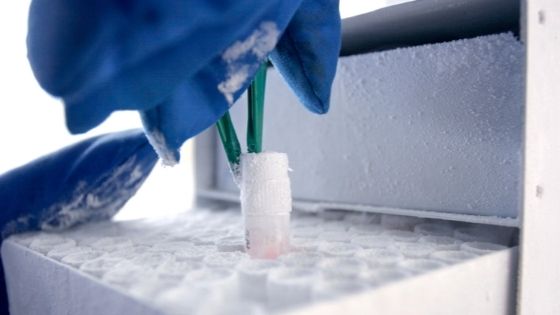When liquid air is fractionally distilled, the result is a liquefied form of nitrogen known as liquid nitrogen. It has two nitrogen atoms in covalent bonds, like nitrogen gas (N2). This nitrogen is also called LN2, LN, LIN, or LN2.
Pointers:
- This form of nitrogen evaporates at 77 K (195.8°C or 320.4°F) under standard atmospheric pressure conditions.
- Nitrogen’s liquid-to-gas expansion ratio is 1:694, meaning that a small amount of this nitrogen can quickly turn into a large amount of nitrogen gas.
- Non-toxic, odourless, and colourless, nitrogen is a gas. It is a relatively inert substance that is not efficiently combusted or ignited.
- Whenever it reaches room temperature, nitrogen is slightly lighter. It dissolves in water at a low rate.
- The liquid is stored in insulated containers with vents to prevent pressure buildup. The storage time of a Dewar flask can range from a few hours to several weeks, depending on its design.
- Make the Spectacularity of the Unknown Because of the Leidenfrost effect, both liquid and solid LN2 boils quickly enough to create a layer of insulation of nitrogen gas around surfaces. This is why nitrogen droplets scurry across a floor when they are spilt.
Protecting Yourself With Nitrogen
- Contact of living tissue with liquid nitrogen results in severe frostbite. This nitrogen handling requires protective clothing and equipment to avoid accidental contact with or inhalation of icy vapour. To avoid being exposed, keep skin covered and insulated.
- Pressure can build up quickly during the liquid-to-gas transition because it boils quickly. This nitrogen shouldn’t be kept in a closed bag because it could explode if the seal is broken.
- An asphyxiation risk may arise from adding enormous amounts of nitrogen to the air, reducing this relative amount of oxygen. It is more dangerous to breathe in cold nitrogen gas because it weighs more than air. Ensure the area where you’re working with a liquid form of nitrogen is well-ventilated before you begin.
- Concentrated oxygen in the air may be trapped in tanks of nitrogen. There is a risk of organic matter being violently oxidised as nitrogen evaporates.
It has a plethora of applications
- Its low reactivity, along with cold temperature, makes many applications possible. Among the most common uses are:
- Food products can be frozen and transported in this way. Using cryopreservation, samples like sperm, egg whites, and animal genetics can be preserved.
- For cooling down superconductors and vacuum pumps as well as other gear
- Remove skin abnormalities with cryotherapy.
- Quickly freeze water or pipes to perform repairs even if valves aren’t available.
- A source of nitrogen gas that is extremely dry.
- Cattle are branded for identification purposes.
- Preparation of novel foods and drinks using molecular gastronomy techniques.
- Science experiments, such as making ice cream with this nitrogen, making fog with nitrogen, and strobe flowers and then watching each other shatter once tapped on a hard surface, are examples of this.
The Liquid Nitrogen Plant’s working principle
The air is first condensed to 7 bar pressure in this Nitrogen plant compressor. The external refrigerator lowers the temperature of this hot compressed air. Once the compressed air has been cooled, it is run through a moisture separator to remove any remaining moisture. Carbon molecular sieves are then used to separate Nitrogen and Oxygen from compressed air. Cryo coolers cool the gases Nitrogen to liquid at the full boil of nitrogen after separated (77.2 Kelvin). To conclude, Dewar’s vessel holds a large amount of this nitrogen used for various industrial applications.




















